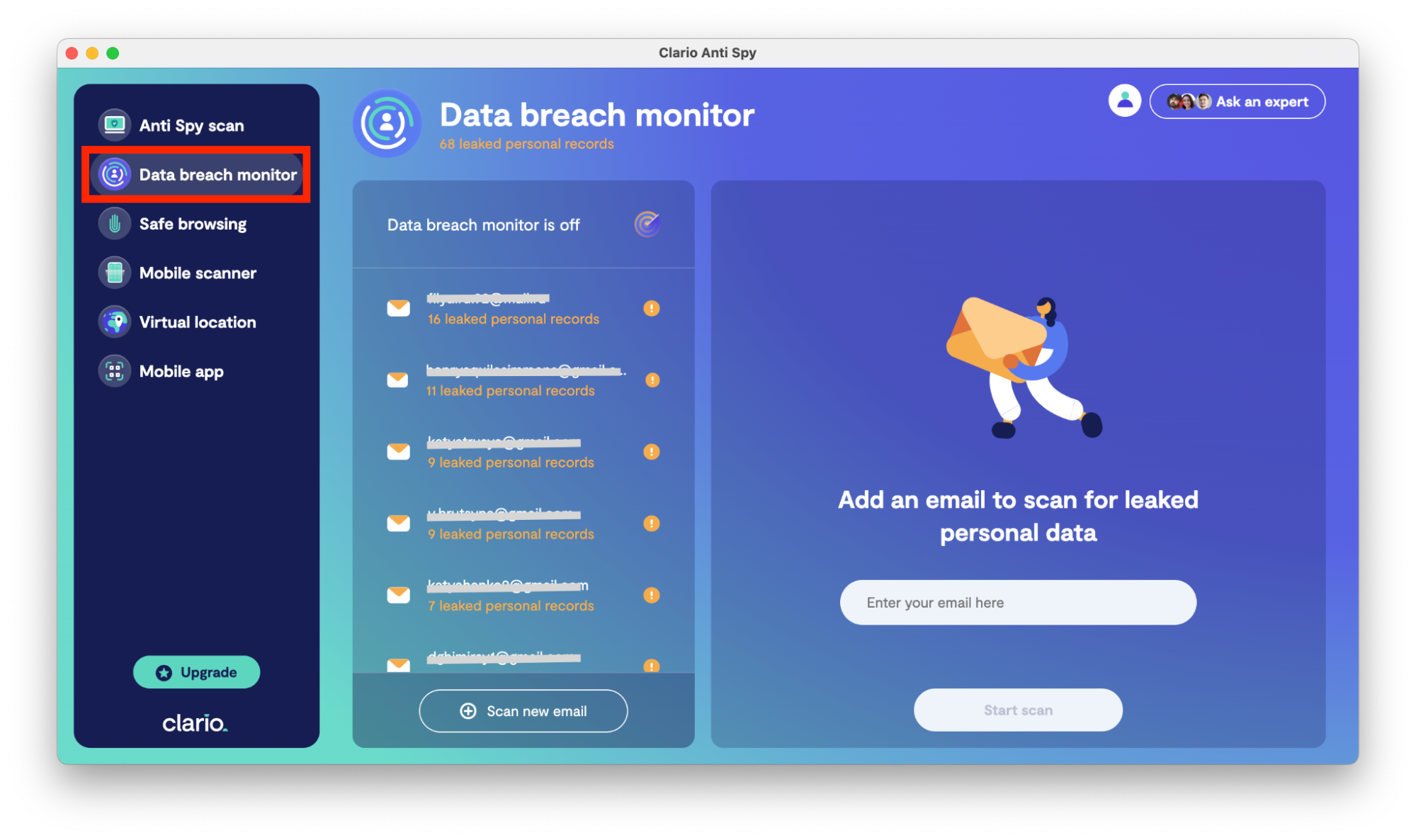Table of contents
- What is password spraying?
- How do criminals spray passwords?
- Is spraying a type of brute force attack?
- Impact of password spraying
- Signs of a spray attack
- 1. You can’t log into your account
- 2. Huge amount of suspicious sign-in attempts
- 3. Many of your accounts are blocked
- The danger of password spraying
- Defend against password-spraying attacks
- 1. Use strong passwords
- 2. Enable Active Directory for password protection
- 3. Manage security settings
- Conclusion
What is password spraying?
Password spraying is a brute force attack in which hackers or bad actors try to access people’s online accounts using a handful of default passwords. This attack often works on accounts on the same application because administrators sometimes use the same passwords across various accounts.
Many devices lock people out after a few attempts at entering an incorrect password. Password spraying is effective because the attacker uses one password across multiple accounts instead of trying different password combinations on one account. After being unsuccessful with one password, they move on to the next one.
Did you know? A Google study found that 24% of Americans have either used the following simple passwords or a variation of them:
- abc123
- Password
- 123456
- Iloveyou
- 111111
- Qwerty
- Admin
- Welcome
How do criminals spray passwords?
Criminals start by attempting to access one online account using an easy password combination for a username. They try one with the person’s name, username, or common words used in passwords, like Qwerty. After gaining entry to that account, they move on and try it against other accounts with the same username.
Password reuse statistics
A Google Online Security Survey found that 52% of adults in the US reuse the same password across different accounts, while only 24% use a password manager.
Some companies let users know when their accounts have suffered an attack, but you can miss the announcement or notification. This could leave you exposed for a more extended period of time. We advise that you use a reliable data breach monitor to aid in the detection of data leaks containing your email address.
Clario AntiSpy’s Data breach monitor checks if your email addresses were compromised in breaches and regularly looks for leaks, so you can act fast if you’re affected.
Here’s how to set up and use Clario AntiSpy’s Data breach monitor:
- Download Clario AntiSpy on your iOS or Android device, get a subscription, and set up an account.
- Tap Data breach monitor, enter your email address, and wait while Clario AntiSpy checks if your emails are vulnerable.

3. Clario AntiSpy will let you know if your data has been leaked online. Follow the on-screen instructions to fix each breach outside the app.
4. Mark the breach fixed in the app after you have retrieved access to your account and changed the password. Add a new email and repeat the process to scan it.
Is spraying a type of brute force attack?
Password spraying is a type of brute force attack. Like other brute force attacks, cybercriminals use the trial-and-error method to guess users’ passwords. Unlike other attacks, criminals use a known password to gain unauthorized entry into an online account. In essence, they get lucky as a result of people’s carelessness.
Brute force attack definition
A brute force attack is a type of cyberattack where a hacker attempts to access a victim's account by guessing the password. This is often done when hackers have passwordless data dumps containing only a list of usernames.
Impact of password spraying
Password spraying is dangerous, and the impact is far-reaching. A breach in one account compromises the accounts with the same login password—your banking accounts, for example. The most valuable advice is not to use the same passwords across different online accounts.
Signs of a spray attack
How do you know you’re in the midst of a spray attack? Here are the signs:
- You can’t log into your accounts
- There are a huge amount of login attempts on your accounts
- Many of your accounts are suddenly blocked
There are various ways to tell if you’re the victim of a password spray attack. Look out for the signs below.
1. You can’t log into your account
Anytime you have trouble accessing your account, that’s a sign a hacker or cybercriminal might have compromised it.
2. Huge amount of suspicious sign-in attempts
If you’re getting notifications about failed password attempts, your account might be under attack, meaning a cybercriminal is guessing your password incorrectly.
3. Many of your accounts are blocked
Your accounts can get blocked after a hacker attempts to access them using multiple incorrect passwords.
The danger of password spraying
Besides accessing sensitive information, cybercriminals can unleash ransomware during a successful password-spraying attack. This means the damage can be far greater than losing personal data. Also, the duration of the attack is indefinite. It may last until you identify and stop it.
Defend against password-spraying attacks
Password spraying attacks may be dangerous, but prevention is possible. Here’s how to protect yourself from spraying attacks:
- Use strong passwords that can’t be easily guessed
- Enable Active Directory for password protection, like Azure AD Password Protection
- Manage your security settings and review them often
1. Use strong passwords
When you use weak passwords, you’re basically serving your account to cybercriminals on a silver platter. Ensure your passwords are complex and uncommon (not reused). Learn how to create a secure password.
2. Enable Active Directory for password protection
Azure AD Password Protection helps you manage a list of common passwords that are too easy to guess. Azure has a default list of about 1,000 words. You can expand it by adding more words.
Follow the steps below to enable Azure AD Password Protection:
- Go to Azure AD Active Directory settings, head to the Security section, and select Authentication Methods.
- Go to Enable Custom List and click Yes.
- Navigate to the Custom banned password box and enter a list of common passwords.
3. Manage security settings
Strengthen your network’s security and review the effectiveness of your settings regularly to ensure you have the best defense against attacks.
Regularly change your passwords and form strict lockout policies to give cybercriminals less leeway to compromise your accounts. Additionally, learn how to prevent wardriving to secure your networks.
Conclusion
Password spraying is a common practice fueled by weak security systems and easy passwords. Use the solutions and resources in this article to avoid falling victim to this type of attack and to strengthen your spraying cybersecurity. As an added layer of security, trust Clario AntiSpy’s Data breach monitor to help you identify and act on data leaks containing your email address and protect your privacy.


